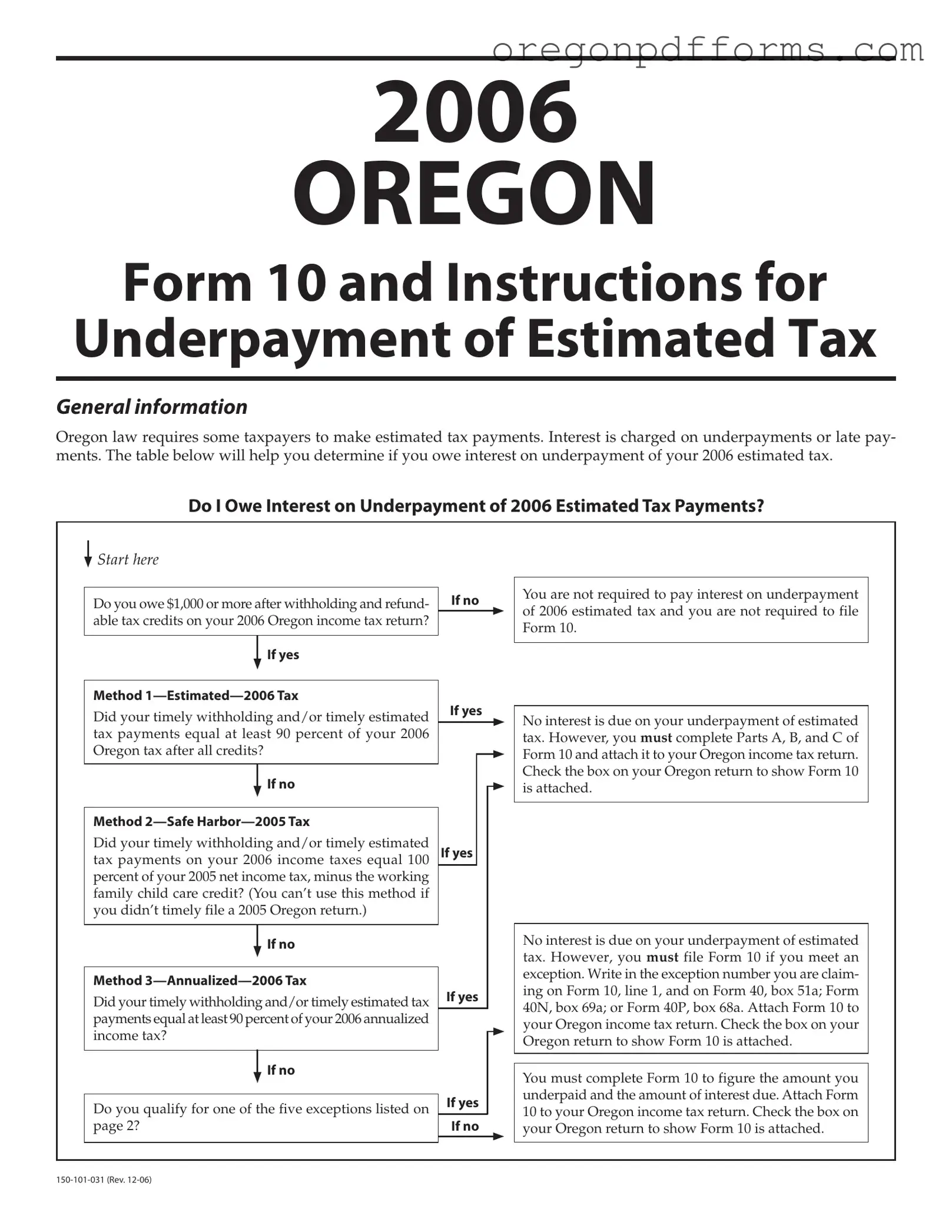The Oregon 10 form is an essential document for taxpayers who may owe interest due to underpayment of estimated taxes. Designed specifically for the tax year 2006, this form helps individuals determine if they owe any interest on underpayments or late payments related to their estimated tax obligations. In Oregon, certain taxpayers are required to make estimated tax payments, and if these payments fall short, the Oregon Department of Revenue may charge interest. The form outlines various methods to assess whether an individual meets the criteria for underpayment interest, including a comparison of current year withholding and estimated tax payments against previous years' tax obligations. Additionally, the Oregon 10 form provides a list of exceptions that may exempt taxpayers from owing interest, such as those involved in farming or fishing, or those who retired or became disabled. By completing the necessary sections of the form, individuals can accurately calculate their underpayment amounts and any interest due, ensuring compliance with Oregon tax laws while potentially avoiding unnecessary penalties.
